Key Takeaways:
- Treating erectile dysfunction need not be a persistent problem with modern treatments.
- St. Pete Urology offers a three-piece inflatable penile prosthesis procedure that is an outpatient procedure, remarkably quick, and completed in about an hour.
- The penile implant procedure offers a degree of spontaneity that resembles more of a natural-like erection and is a more permanent solution to erectile dysfunction.
Treating Erectile Dysfunction: A New Approach with Dr. Adam Oppenheim
Many men often face a major hurdle in their lives due to erectile dysfunction. However, with modern treatments, this condition does not need to persist as a problem. Let us introduce you to Dr. Adam Oppenheim, a dedicated board-certified urologist at St. Pete Urology. His team is committed to helping men overcome this condition.
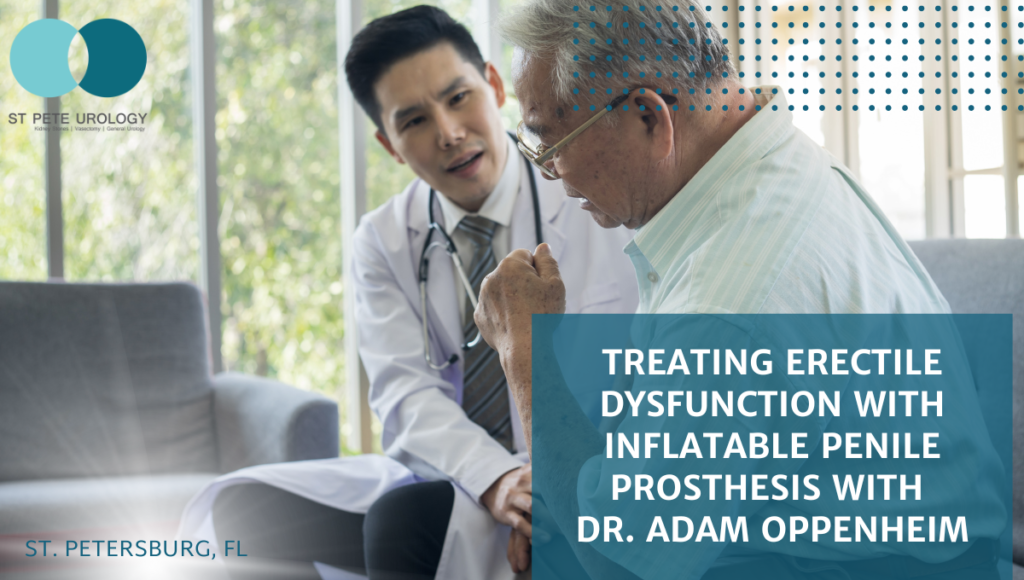
A Non-Tolerable Issue Finding a Tolerable Solution
“We offer a procedure called the inflatable penile prosthesis for patients who either don’t respond well to the more conservative measures or they’re not able to tolerate it,” explains Dr. Oppenheim. The conservative measures he speaks of may include painful injections. No one should have to endure such discomfort for a condition that now has simpler and more effective solutions.
St. Pete Urology offers the inflatable penile prosthesis procedure. It is an outpatient procedure, remarkably quick, and our team completes it in about an hour. The patient can go home the same day, and they only need to return after about four to six weeks to have the device activated.
The Three-Piece Secret
Called a three-piece inflatable penile prosthesis, this procedure comprises three components, as explained by Dr. Oppenheim. The ingenious device includes an activation pump residing in the patient’s scrotum, two cylinders situated in the shaft of the penis, and a fluid-filled reservoir nestled cozily in the abdominal space.
Dr. Oppenheim goes on to explain that all these components get installed through one small incision made between the penis and the scrotum. He further adds, “The patient wants to have an erection, he presses the activation button, which sends fluid from the abdominal space reservoir into the two cylinders in the shaft of the penis, creating a natural-like erection.”
Natural-like Erection Without the Hassle
Dr. Oppenheim highlights one of the most enticing features of the implant procedure, its resemblance to a natural erection. “Unlike remembering to take medicines for erectile dysfunction, the penile implant procedure offers a degree of spontaneity that resembles more of a natural-like erection and provides a more permanent solution to erectile dysfunction,” says Dr. Oppenheim.
Embrace the Solution by St Pete Urology
This discreet, effective, and permanent solution is encouraged for consideration by any man dealing with erectile dysfunction. At St. Pete Urology in St. Petersburg, FL, experienced and compassionate experts like Dr. Adam Oppenheim are proud to be available for assisting you. Treating erectile dysfunction has never been easier, nor has it ever been more promising for a return to natural functionality. You are invited to reach out to us, and let’s journey towards health and satisfaction together.
References:
- St Pete Urology. (2013, January 2). St. Pete Urology | Urologists in St Petersburg, Florida. St Pete Urology. https://stpeteurology.com/what-is-the-cause-of-erectile-dysfunction/
- St. Pete Urology | Urologists in St Petersburg, Florida. (2023). St Pete Urology. https://stpeteurology.com/category/erectile-dysfunction-cat/
- and, D. (2023, July 28). Symptoms & Causes of Erectile Dysfunction. National Institute of Diabetes and Digestive and Kidney Diseases; NIDDK – National Institute of Diabetes and Digestive and Kidney Diseases. https://www.niddk.nih.gov/health-information/urologic-diseases/erectile-dysfunction/symptoms-causes
- Penile Prosthesis – Department of Urology. (2022, November 30). Department of Urology. https://med.virginia.edu/urology/for-patients-and-visitors/penile-urethral-reconstruction-at-uva/penile-prosthesis/
- Cavayero, C. T., & McIntosh, G. V. (2022, September 26). Penile Prosthesis Implantation. Nih.gov; StatPearls Publishing. https://www.ncbi.nlm.nih.gov/books/NBK563292/
Transcription:
I’m Dr. Adam Oppenheim, I’m a urologist with St. Pete Urology. So we offer a procedure called the inflatable penile prosthesis for patients who either don’t respond well to the more conservative measures or they’re not able to tolerate it. You know, sometimes the injections are very painful and they don’t really tolerate it very well. So we offer the penile implant procedure. This is an outpatient procedure that usually takes about an hour to complete and the patient is sent home after the operation. They return about four to six weeks later to have the device activated when after healing has happened and it’s ready to use.
So the procedure is called a three-piece inflatable penile prosthesis. It’s called three-piece for a good reason. It’s composed of three components. The components are an activation pump that sits in the patient’s scrotum, two cylinders that sit in the shaft of the penis, and a fluid-filled reservoir that sits in the abdominal space. All three of these components are placed through one small incision between the penis and the scrotum. So the way the device works is when the patient wants to have an erection, he presses the activation button, which sits in the patient’s scrotum. This sends fluid from the abdominal space reservoir into the two cylinders in the shaft of the penis, creating a natural-like erection.
When the patient’s done, he hits the deactivation button, which is also on the same pump in the scrotum, which releases the fluid back from the cylinders in the penis into the reservoir. Unlike remembering to take medicines for rectal dysfunction, the penile implant procedure offers a degree of spontaneity that resembles more of a natural-like erection and is a more permanent solution to erectile dysfunction.

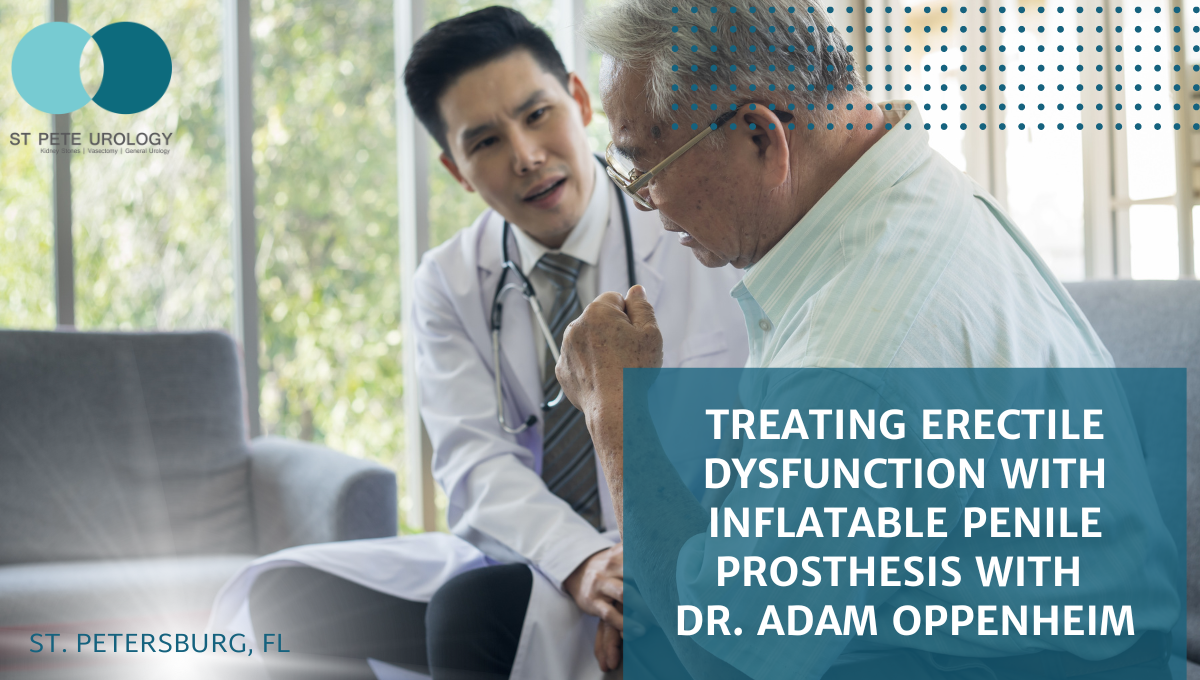


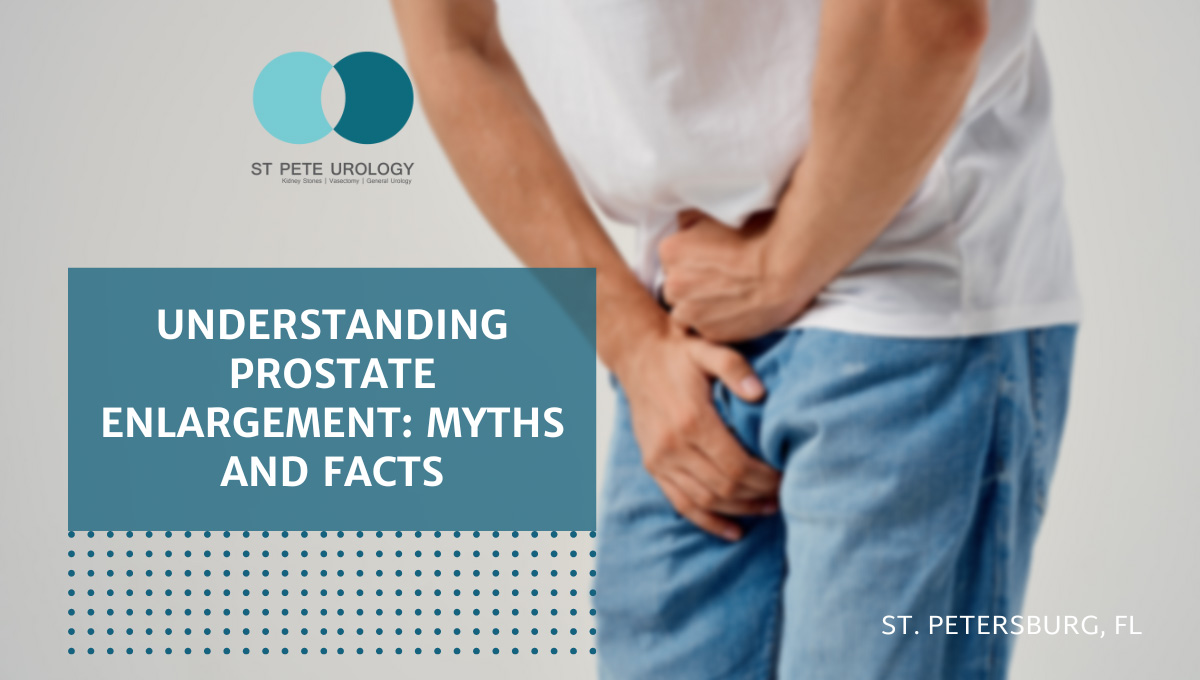
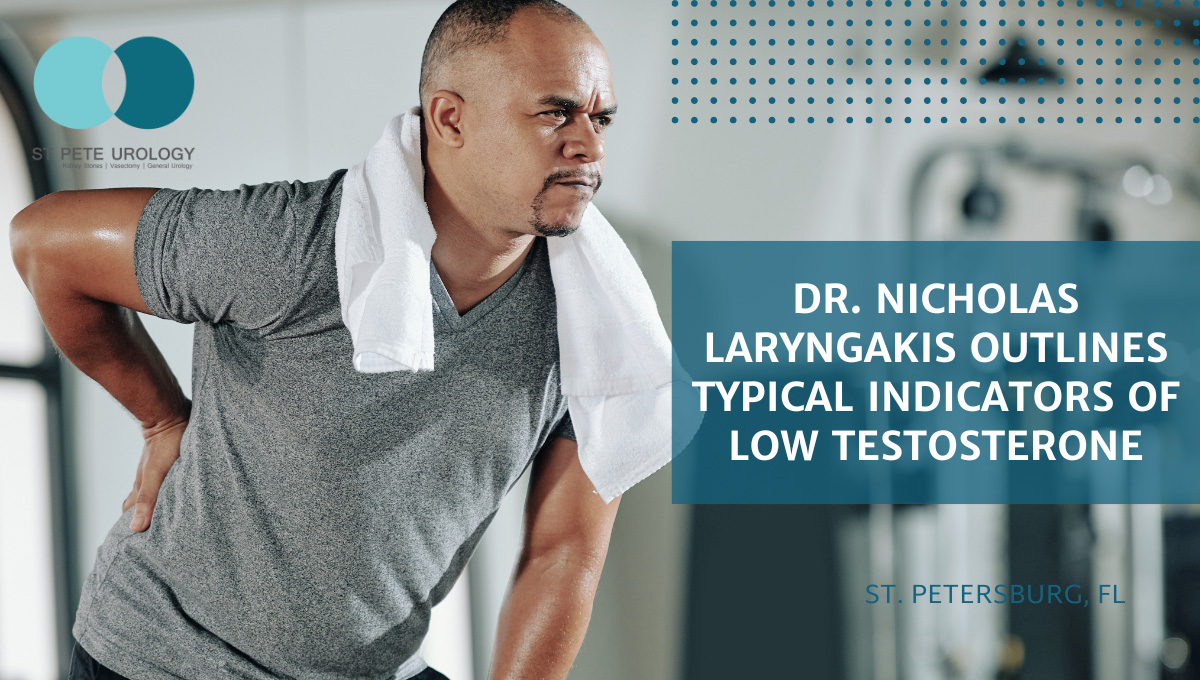
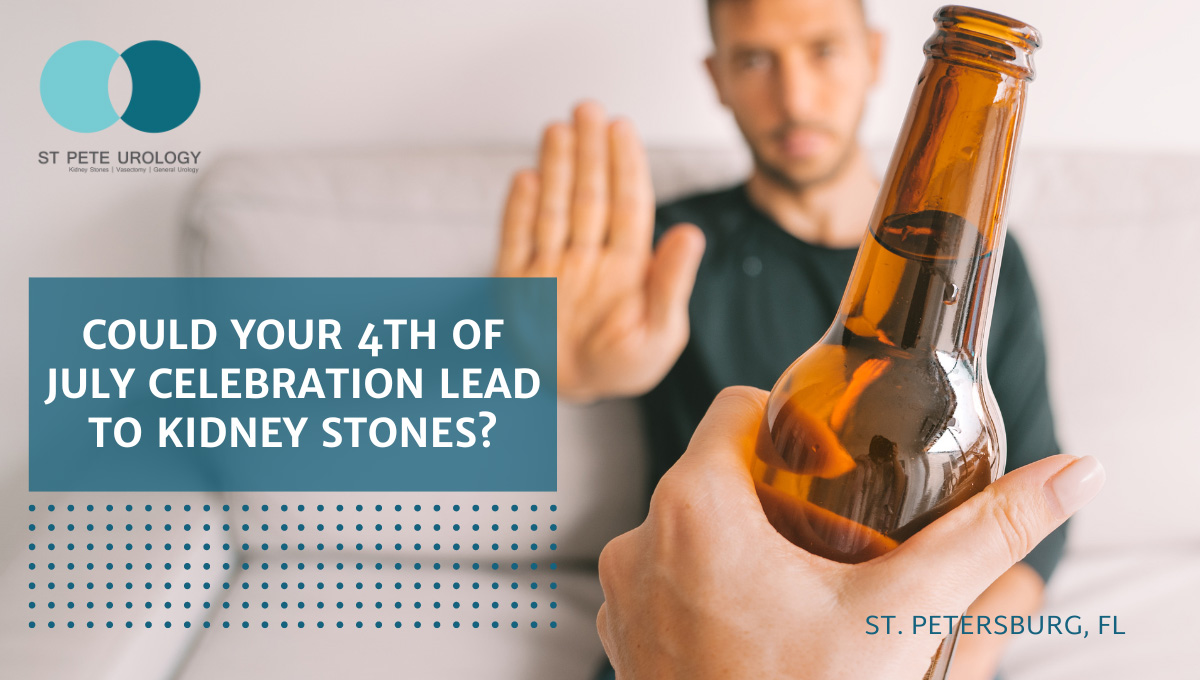

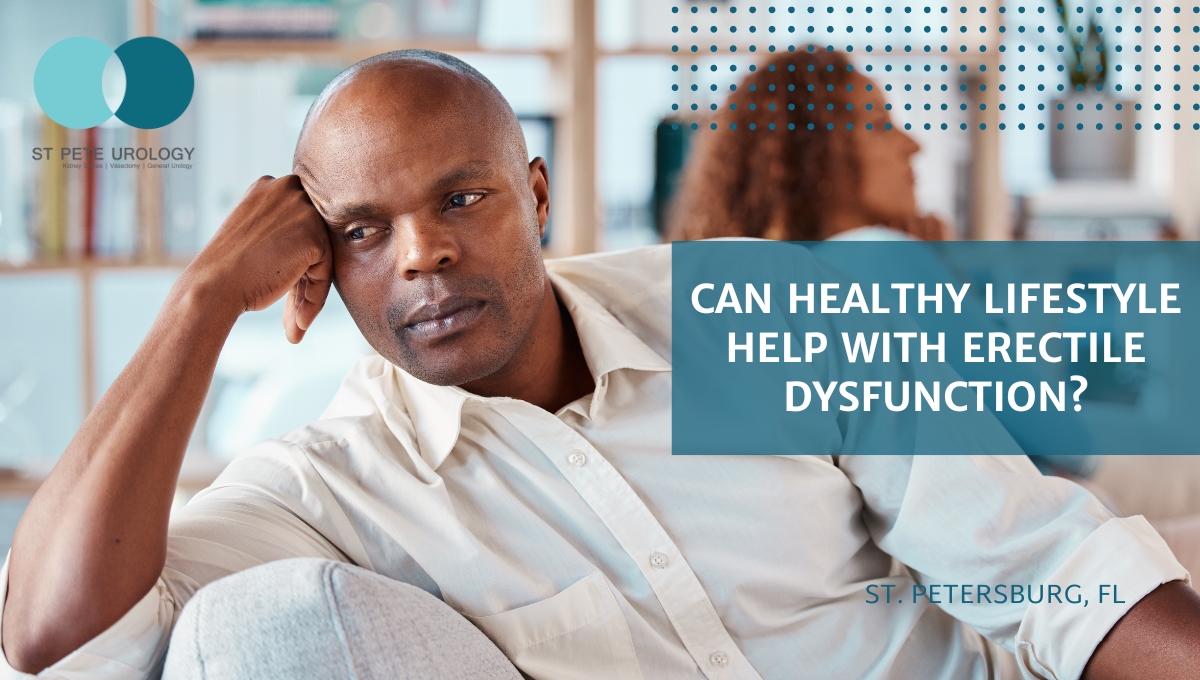
 Erectile dysfunction
Erectile dysfunction

 When you discuss the topic of
When you discuss the topic of 